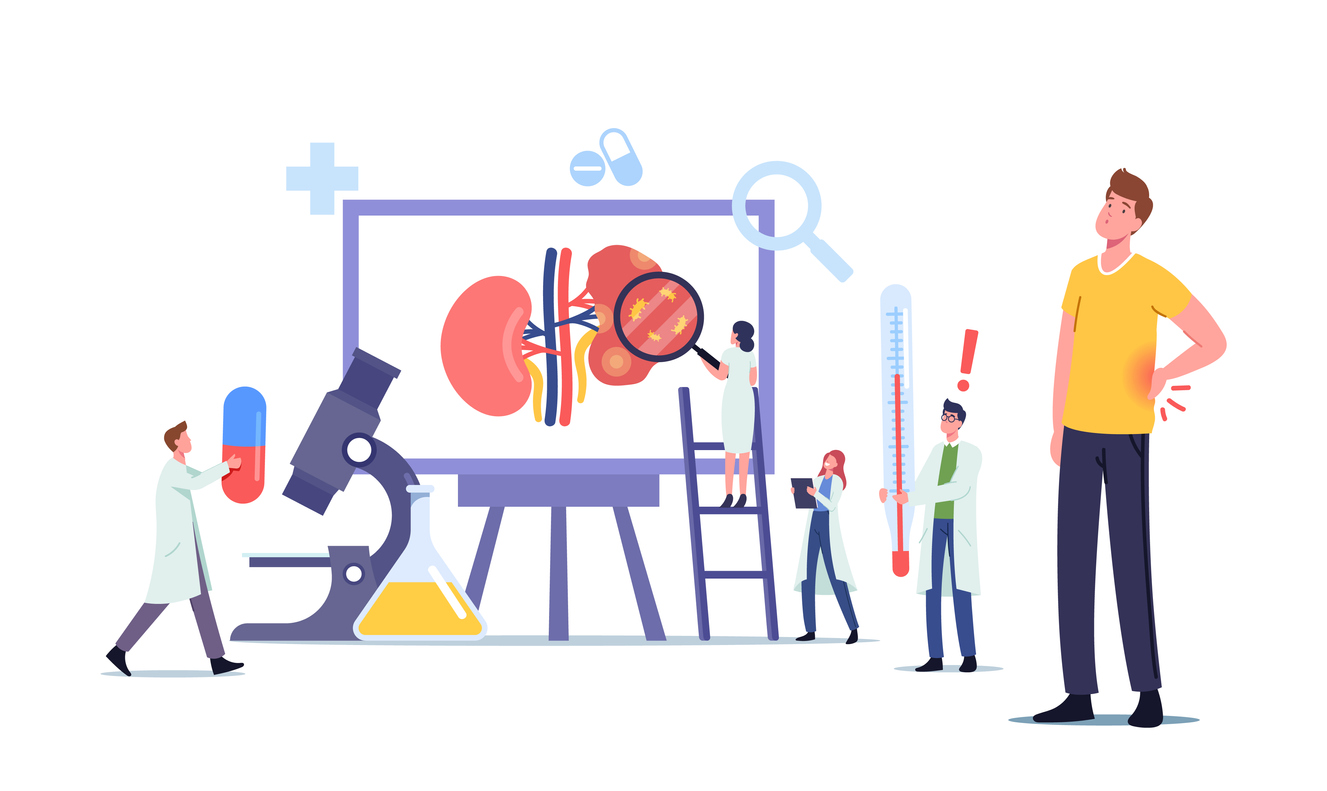Pain
Diagnosing Kidney Pain

What is kidney pain?
Kidneys are bean-shaped organs that are about the size of a fist and located at the back of the torso. They are situated under the lower part of the rib cage on each side of the backbone. Their main function is to filter waste from the blood and produce urine that is sent to the bladder. Kidney pain is discomfort in the area of the kidneys. It typically presents as a dull ache on the sides, back, or stomach area. However, pain in these areas is not always linked to the kidneys and may be caused by the back.
Diagnosing kidney pain
In order to properly treat kidney pain, health care professionals need to determine the exact cause. Typically, this is done by obtaining a health history, performing a physical examination, and ordering specific tests.
Health history
A health history will be gathered and evaluated by the health care professional. This should include any current or past diagnosis, detailed symptoms, and family history.
Physical exam
A physical examination may include checking the painful area to determine if it is near or at the kidneys. The health care professional will likely press on the area to see if pain worsens with touch.
Urine test
A urine sample will be collected to check for albumin, which is a protein produced by the liver. Health care professionals will also look for blood, pus or bacteria in the urine. White blood cell counts will be checked to determine if an infection is present. An urinalysis will also inspect for certain molecules that are linked to kidney disorders.
Blood test
A blood test can determine if the kidneys are functioning properly by removing waste. The amount of urea nitrogen in the blood can also be measured, which, if higher than normal, could indicate that a kidney disease is present.
Imaging tests
An ultrasound or computed tomography (CT) can determine if kidney stones are the cause of pain. These tests can also dictate if urine flow is adequate or if the kidneys or urinary tract has other problems. An X-ray may be taken after injecting a contrast dye to view the bladder when full and while urinating.




